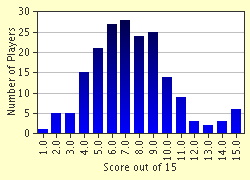Quiz Answer Key and Fun Facts
1. What famous strike began in 1912 and was referred to as the "Bread and Roses" strike?
2. What were the Great May Labor strikes of 1886 all about?
3. What event triggered the Haymarket Square bombing of May 4, 1886?
4. After the bombing of Haymarket Square how many labor leaders were arrested?
5. Of the eight labor leaders arrested at Haymarket Square, how many were hung, how many committed suicide and how many were pardoned?
6. What strike led to Labor Day becoming a national holiday?
7. Eugene Debbs led the strike at the Pullman yards and ran for President of the United States three times on the Socialist ticket. Was he a Socialist during the Pullman Strike?
8. What were the key issues surrounding the Oshkosh Woodworkers strike of 1898?
9. The Great May Labor Strikes of 1886 ended where?
10. What secret organization provided the basis of the American Federation of Labor?
11. What is a Ghost Union?
12. Which Labor Act was called the beginning of the end of unions by its opponents?
13. When did the eight hour day come into effect?
14. Eight hours was the main crux of the Great May Labor Strikes. Were companies willing to grant the eight hours?
15. Okay, Okay, I hope I haven't bored you yet but here is the last one and I'll try to make it easy on you. What singer had a number one hit with "This Land is Your Land" but was more noted for labor related music?
Source: Author
blakey
This quiz was reviewed by FunTrivia editor
Exit10 before going online.
Any errors found in FunTrivia content are routinely corrected through our feedback system.

